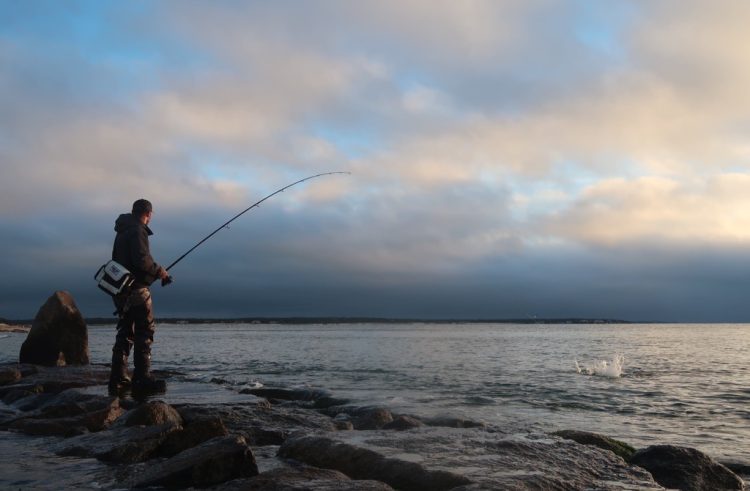Stay Mobile or Stay Put | Fall Run Survival Guide
"Should I stay or should I go?" - The Clash

The fall run is a chaotic and wonderful time to be a striped bass angler. Even though fishermen throughout most of the Northeast can count on about two solid months of fishing for migrating stripers between Labor Day and New Year’s, there’s a “blink-and-you’ll-miss-it” feel that causes us to cast with a sense of urgency that wasn’t present back when the bass were migrating north. To help make the most of this year’s fall striper migration, we’ve compiled this “Survival Guide” by surveying some of the most dedicated surfcasters in the Northeast and sharing some of our favorite tips for the final months of the striper season. – Jimmy Fee
Most fishermen go after stripers in the fall, and keep moving until they find the fish, having a “milk run” of beaches and boulder fields to check for activity. Fall fishing can be very visual, with diving birds, fleeing bait, and blitzing stripers. This time of year, it’s always good to keep some binoculars in the truck to scan the beach for signs of a big school.
Staying put can also be a good strategy if you know of a location where the fish are bound to move through. It may mean enduring periods of slow fishing, but when the migration reaches the beach you’ve been staking out, the reward is well worth it.
“Fall means moving fish. Even when I’m on fish, I move to find bigger ones. That has paid off immensely on more than a few occasions, especially when bunker schools were around.”
– Tim Regan, South Fork Salt, New York
“At some places, I won’t even bother getting out of the truck unless I see some sort of activity. Others, I will give an hour or so of blind fishing before moving on.”
– Steve Gallant
“Maine’s summertime haunts typically produce until the very end of the fall run and I’ll stake out my territory there.”
– Anthony Pizzella
“I fish spots where I have caught in the past. I know when and where they “should be,” and put in my time. When you’re on the fish, it’s key to stay on them because they seem to move in bigger schools—it’s exceptional fishing in some areas and very poor fishing everywhere else. Find spots where fish have to pass through and gets you in well-oxygenated water, then fish it hard.”
– Craig Cantelmo, Van Staal Reels, New York
“I very rarely search or hunt for bites at any time in the season; instead, I opt to cycle through a small repertoire of spots until I find fish. Once I do, I stay on them until the bites dies off, then I begin the cycle again.”
– Toby Lapinski
“Regardless of tide, current, weather, moon, date, or anything else, I am on the Cape Cod Canal almost every day for 8 months.”
– East End Eddie Doherty
“Most of the miles on my truck are fall-driven miles. I live 25 minutes from Montauk and 25 minutes from the Shinnecock Canal, which are my boundaries. So, if one area hasn’t been producing, I move in either direction in search of fish and life. I try my best to find a bite/pattern every time I go out, even if that means long hauls and catching specific tides in specific locations.”
– Stephen Lobosco
Related Content
Essential Lures | Fall Run Survival Guide
Leave a Reply